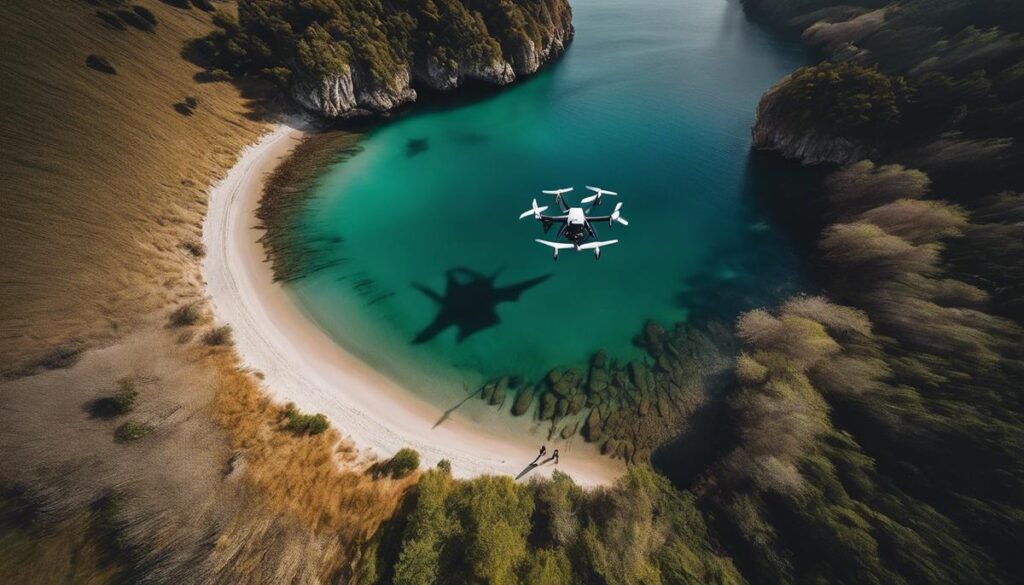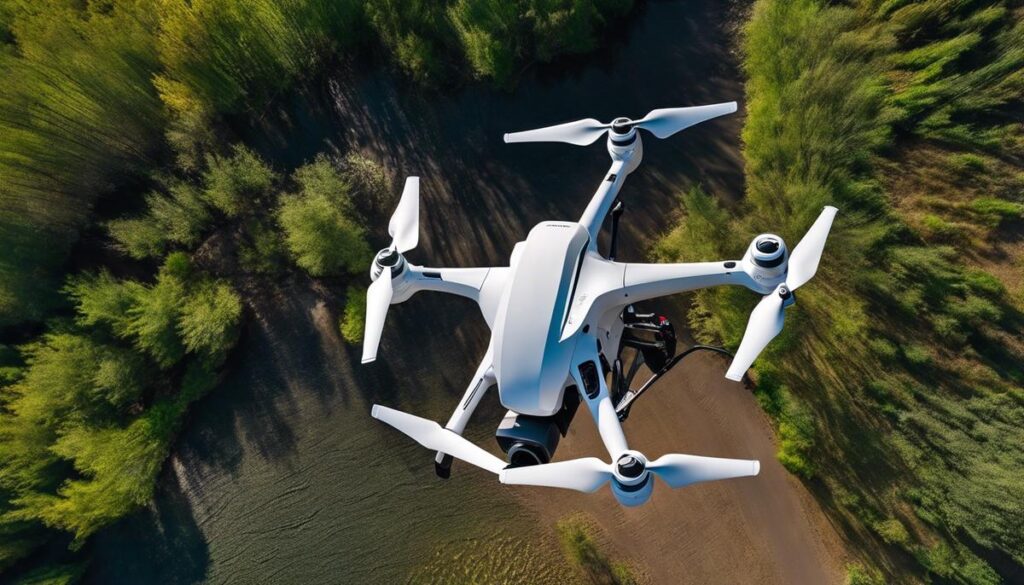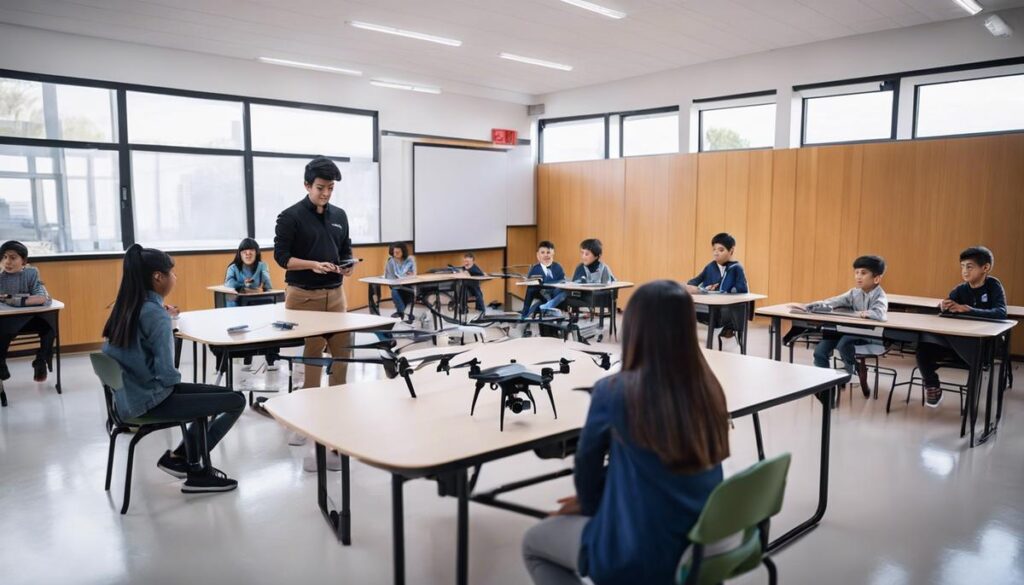In the world of photography, the introduction of DJI drones has revolutionized the way we capture the world around us, adding a new dimension and a bird’s eye perspective. Yet, mastering drone photography is not just about flying a drone and snapping random pictures. Instead, it requires an in-depth understanding of drone features and functions, fine-tuning camera settings, and deploying innovative photographic techniques to achieve stunning aerial shots. As enthusiasts and hobbyists looking to hone your drone photography skills, grasping these aspects is your first step to capturing high-quality, captivating images that transmit not only visual, but emotional depth from a vantage point only drones can provide.
Understanding Your DJI Drone
Unveiling DJI Drones: Their Essential Components and Impact on Photography
Every tech enthusiast knows that the drone industry has taken significant leaps forward over the last decade, changing the landscape for hobbyists and professionals alike. In this revolution, DJI has forged a dominant position, introducing innovative technology that has significantly altered modern photography. But what makes these drones the go-to gadgets for aerial photography? The answer lies in the elements that define the essential design of DJI drones.
- Propulsion System:
- Battery:
- Flight Controller:
- Camera and Gimbal System:
- Sensors and GPS:
The propulsion system in DJI drones thickens the complexity of the device. A DJI drone’s propulsion system includes motors, electronic speed controllers (ESCs), and propellers. The motors provide torque that rotates the propellers, generating lift to counteract gravity. Different models use varying motor types and sizes, which affect the drone’s weight carrying capacity, speed, and flight time.
Integral to the operation of a DJI drone, batteries supply the power required to spin the motors and other integrated systems. The usage duration and flight time of the DJI drone pivot on the capacity of the installed battery.
The flight controller works as the drone’s brain, coordinating all hardware and software functions. It processes signals from the operator, sensors, and the GPS, adjusting motor speed to maneuver the drone as needed. The more advanced the flight controller, the better the flight and navigation experience.
Arguably the most important component for photography enthusiasts, the camera and gimbal system play a significant role in DJI drones. DJI incorporates high-resolution cameras for capturing detailed images and videos, making them highly sought after by professional photographers and videographers. The gimbal system serves to stabilize the camera during flight, enabling smooth video capture and sharp images despite the drone’s movement.
These components contribute to the convenience of drone flight. With obstacle detection sensors and GPS, DJI drones offer enhanced safety, precision in positioning, and the ability to follow pre-set flight paths. This not only helps avoid potential mishaps but also allows for more dynamic and complex photography compositions.
The harmony of these distinct modules results in the compact, easy-to-control devices that we know as DJI drones. The cutting-edge technology incorporated in each component has revolutionized drone photography, allowing for a unique perspective and unparalleled precision. DJI drones, with their advanced cameras and stable flight capabilities, have proven to be a boon for enthusiasts and professionals alike, turning aerial photography into an art anyone can master. Indeed, in this age dominated by digital advancements, DJI drones have sculpted their niche, changing the way we look at the world—from the skies above.
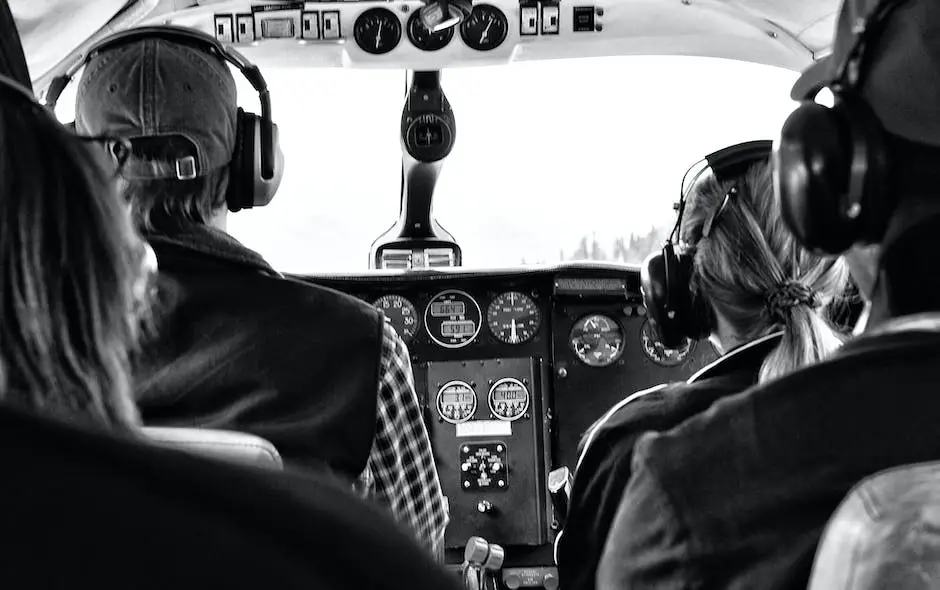
Exploring Camera Settings
Title: Maximize Your DJI Drone’s Camera Settings for Exceptional Photography
For drone enthusiasts, the DJI series offers unmatched potential. These technological marvels possess superior imaging capabilities that can completely redefine photography. But to unlock the true photographic prowess of your DJI Drone, it is essential to understand and maximize the camera settings, ranging from basic setup to advanced maneuvers.
Before we dive into the nitty-gritty, here’s a refresher: DJI drone cameras employ top-notch sensors that enable stunning aerial photography and videography. However, just having high-end equipment isn’t enough; understanding how to fine-tune the settings could be the key to landing that perfect, professional-grade shot.
1. Exploring the Mode Settings
First off, venture into the mode settings. The DJI’s camera, like any professional camera, includes different modes such as Single Shot, Burst Mode, Auto Exposure Bracketing (AEB), and Interval. AEB is particularly valuable for capturing high contrast scenarios as it takes multiple shots at different exposure levels – amalgamate these during post-processing for an evenly exposed image.
2. Navigating through Camera Parameters
Next, it’s time to customize camera parameters including ISO, Aperture, Shutter Speed, and White Balance to suit your needs.
A low ISO setting minimizes digital noise, while shutter speed determines how long the sensor is exposed to light. Try slower shutter speeds to capture motion blur or faster speeds for sharper images. The aperture affects the depth of field; a smaller F number results in a shallow depth of field with a softer background.
The White Balance ensures your colors are accurate relative to the lighting conditions. With DJI drone cameras, you can adjust these settings semi-automatically or manually to achieve your desired results.
3. Use Intelligent Flight Modes
Boost your creativity with DJI’s Intelligent Flight Modes. These include Follow Me, Waypoints, Point of Interest and more, each facilitating distinct shots. For instance, use Waypoints to set an automated flight path and concentrate solely on the camera control.
4. Post-Processing
Don’t forget the power of post-processing. Shoot in RAW format to maintain extensive detail, allowing a greater range of modifications during post-processing. Use software like Adobe Lightroom or Photoshop to tweak the contrast, saturation, exposure, and to transform your ordinary aerial shot into a masterpiece.
Last but not least, practice makes perfect, especially when you’re harnessing technology. To truly appreciate the potential of your DJI drone’s celebrated camera, it’s crucial to experiment with settings, understand their effects, and finesse your flying skills. So fire up that drone, dive headfirst into these settings, and let the sky be your ultimate canvas!
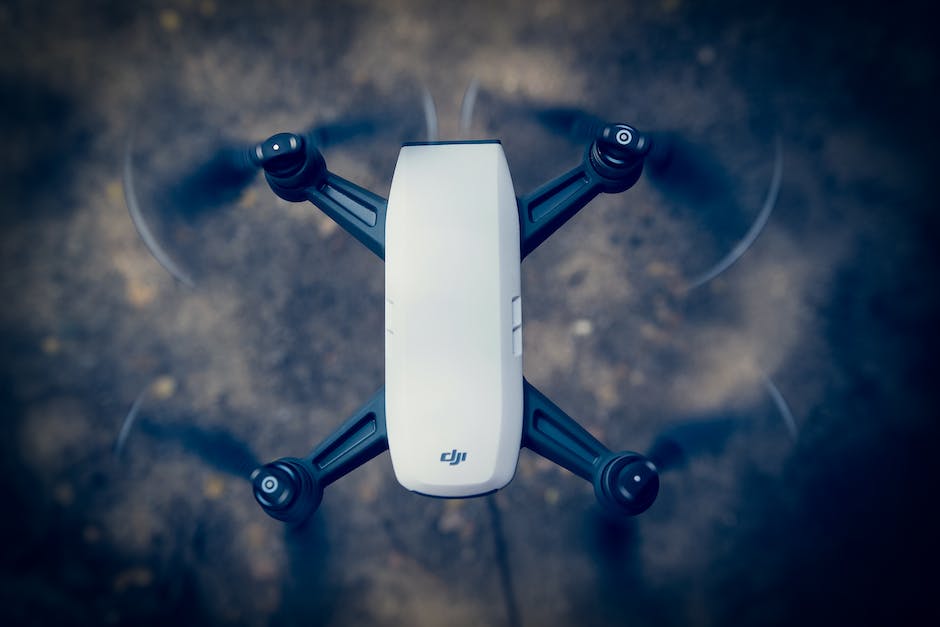
Compositions and Techniques
Leveraging DJI Drones for Exceptional Aerial Photography – Advanced Composition Techniques
A narrative runs deeper than technology or gimmicks. It’s the story that a photograph tells that captures attention and sparks imagination. With DJI drones, you can take your photography skills to unmatched heights—quite literally. This guide will plunge into the intricate world of DJI drone photography composition techniques, empowering you with the knowledge to take stunning aerial photographs that narrate a gripping tale.
1. Rule of Thirds:
This well-established principle of photography is essential for composing compelling shots with your DJI drone. It involves dividing an image into nine equal parts with two equally spaced horizontal and vertical lines. Place the subject along these lines or at their intersections for more balanced and engaging shots.
2. Diagonal Balance:
In this style of composition, your drone can capture two important elements of the frame placed diagonally, bringing an unusual sense of balance. This technique often lures the viewer’s eyes across the entire image.
3. Foreground Interest:
When scouting for photographic opportunities, don’t overlook the power of the foreground. Including interesting elements to fill this space can add depth and create a 3D effect in your photographs, making them more engaging.
4. Use Symmetry:
Symmetry can be a powerful tool in drone photography, offering striking composition. You can find symmetry almost anywhere: city layouts, architectural designs, coastlines, and more. Use it to your advantage to capture compelling shots.
5. Frame within a Frame:
One of the lesser explored composition techniques is “frame within a frame.” Use naturally occurring frames like windows, arches, or overhanging tree branches to add depth and context. With your drone’s range and maneuverability, opportunities abound.
6. Look for Patterns and Repetitions:
Patterns are aesthetically pleasing to the human eye. Farms, vineyards, and rows of houses offer incredible opportunities for pattern-based compositions. Use your DJI drone to find these hidden patterns from the sky, and capture them in compelling images.
7. Use Negative Space:
Negative space refers to the areas around and between the subject of your photographs. Using negative space wisely can create dramatic compositions that focus on your subject. Sky, water, and open landscapes work splendidly as negative spaces in drone photography.
8. Play with Light and Shadows:
With aerial photography, you can easily play with shadows, especially during golden or blue hours. Long shadows can create a dramatic, conceptual, and three-dimensional effect in your images. Experiment with the interplay of light and shadows to take aspirational images.
Remember, it’s not the drone that makes the image, but the person behind the controller. The blend of DJI drone technology and these composition techniques is just a potent toolkit waiting to be deployed for crafting breathtaking aerial photos. Get out there, explore these techniques, push boundaries, and let your drone-captured imagery tell an unforgettable story. A word of warning though: this addictive blend of technology and art may just turn aerial photography into your favorite pastime.
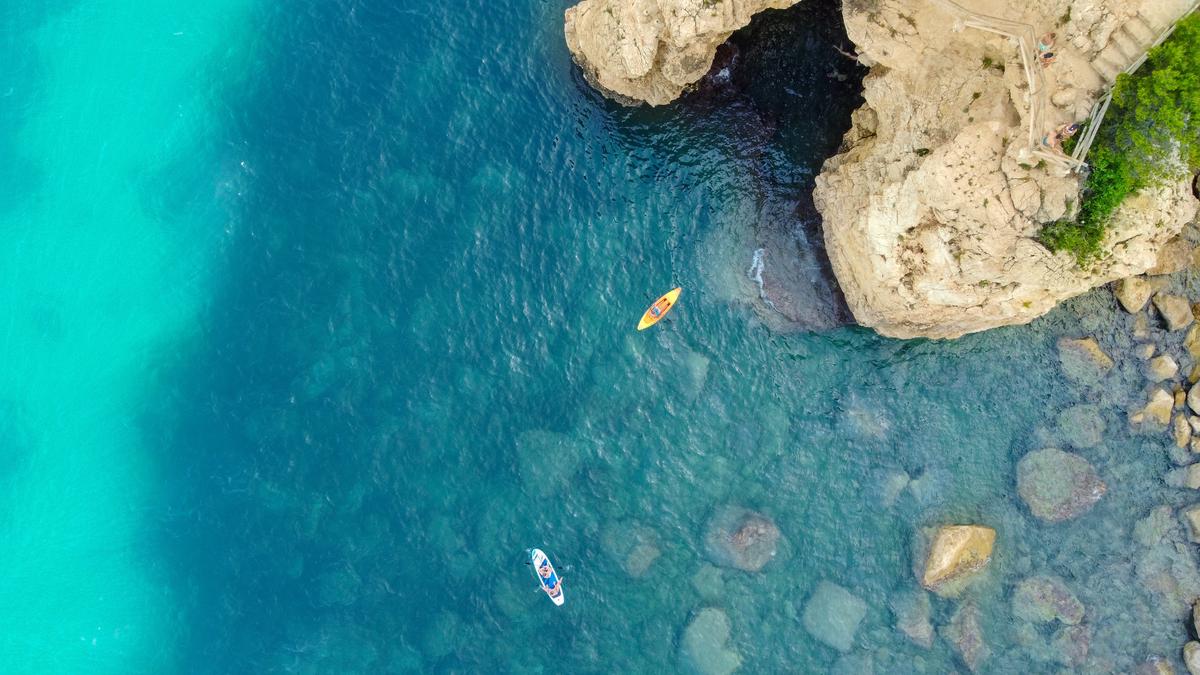
Throughout your journey into mastering DJI drone photography, you’ll come to have a solid grasp on your drone’s distinctive features, learn to manipulate the camera settings to your advantage, and develop a keen eye for composition using techniques like the Rule of Thirds and leading lines. The sky truly becomes your canvas, with endless opportunities to experiment with angles and perspectives that aren’t available from the ground. This dedication to understanding and experimenting will elevate your photographs from simple aerial visuals to compelling works of art, paving the way for you to leave a distinctive mark within the drone photography community.
Originally posted 2024-01-03 01:06:48.

